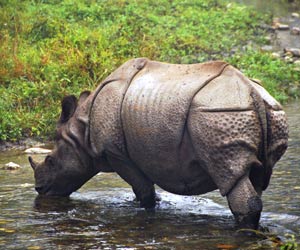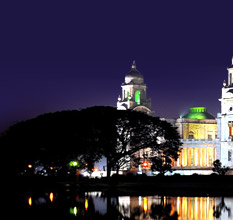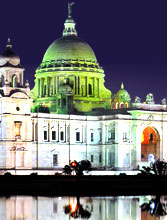 Location: Jalpaiguri district, 124 km from Siliguri
Location: Jalpaiguri district, 124 km from SiliguriFamous For: Asiatic One-horned Rhinoceros
Snuggled in the Alipuduar subdivision of Jalpaiguri district, Jaldapara is situated in the foothills of eastern Himalayas, at a distance of 124 km from Siliguri. The place houses a wildlife sanctuary, prominently known as Jaldapara Wildlife Sanctuary. Sprawling over an area of 141 square kilometers, at an altitude of 61 m above sea level, the sanctuary encompasses luxuriant vegetation and rich wildlife. River Torsha, flowing nearby, adds to the charm and beauty of the place. Jaldapara was affirmed as a wildlife sanctuary in 1941, mainly for the protection of the great variety flora and fauna present here, particularly the one-horned rhino - an animal threatened with extinction.
Fauna
Jaldapara Wildlife Sanctuary is simply magnificent, when it comes to fauna. While the Asiatic one-horned rhinoceros forms the main attraction of the sanctuary, the other animals consists of Royal Bengal tiger, elephant, sambhar, barking deer, spotted deer, hog deer, wild pig and bisons. According to research, Jaldapara Wildlife Sanctuary holds the maximum number of rhino population in India, after Kaziranga National Park in Assam. Talking about birds, Jaldapara is nothing less than a paradise for bird-watchers. The place is one amongst the few in the country, where Bengal Florican can be sighted. Apart from this, crested eagle, pallas's fishing eagle and shikra, jungle fowl, peafowl, patridges and lesser pied hornbill also inhabit this magnificent sanctuary.
Flora
Jaldapara Wildlife Sanctuary extends tourists a sight to behold, what with the different types of vegetation dotting its landscape. Although the major portion of the land is covered by plain grassland, marshy and swampy land is interspersed here and there, making the riverside area an ideal habitat of the rhinoceros and other jungle inhabitants. While the northern dry deciduous forest is the main component of the sanctuary, it also comprises of moist mixed forest, Sal-Khair Sissoo association and alluvial Savannah.
Others
A prominent must-see place in Jaldapara Wildlife Sanctuary is the Fort of Nal King. Boasting of an incredible historical and archeological importance, the fort was built during the Gupta Empire and is an excellent memoir of the glorious bygone era. Today, it is the playground for leopards, snakes and other animals. Another distinctive feature of the forest is that it comprises of a unique type of trees that bleed like humans. Located just few meters outside the broken gate of the old fort, the trees are believed to be 100-200 years old. The trees emit a fluid that is blood-like in color and density. According to the locals, such trees are not found anywhere else in the world.
Activities
One of the most thrilling ways to explore the mystical beauty of the Jaldapara Wildlife Sanctuary is with the adventurous elephant ride. The safari is sure to be an exciting one, extending sights of rhino in a muddy pond, herd of elephants walking majestically or deer running here and there. You can also indulge in jeep safari, a good way to explore the bliss of nature. In short, Jaldapara Wildlife Sanctuary is a haven for nature lovers and adventure freaks, giving them umpteen opportunities to unravel the blissful and enigmatic bounties of nature.









